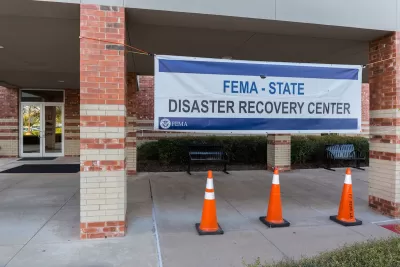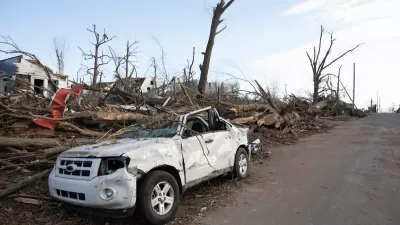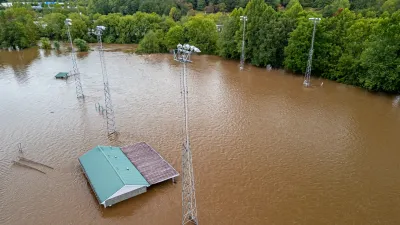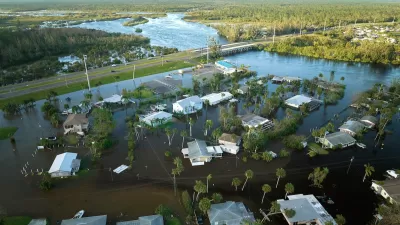The legislation acknowledges the impact of cumulative damage and expands access to funds for communities adjacent to storm-hit states.

A proposed federal bill would let more communities access federal disaster relief dollars, reports Ysabelle Kempe in Smart Cities Dive.
The bill would allow communities “contiguous with a disaster area” that are not in the same state where a disaster was declared access federal funding.
“The Regional Impact of Disasters and Emergencies Relief, or RIDER, Act would also modify the Federal Emergency Management Agency’s definition of a “major disaster” to include cumulative impacts of disasters over a yearlong period, even if none individually meet the threshold for federal relief,” Kempe adds.
The bill aims to assist communities that are often excluded due to technicalities and eliminate the mismatch between federal disaster relief rules and local conditions. According to the bill, the changes “would improve the distribution of disaster relief funds by recognizing that disasters do not neatly follow county or state lines.”
The legislation acknowledges that the cumulative impacts of repetitive storms in one area can pose the same dangers as major single storms.
However, Kempe points out that FEMA has been struggling to keep up with the demand for assistance. In early August, FEMA began operating on an “immediate needs funding” basis in August before Congress authorized an additional $20 billion to keep the agency operating through the hurricane season.
FULL STORY: Bill aims to help disaster-struck communities excluded from federal relief

Planetizen Federal Action Tracker
A weekly monitor of how Trump’s orders and actions are impacting planners and planning in America.

Congressman Proposes Bill to Rename DC Metro “Trump Train”
The Make Autorail Great Again Act would withhold federal funding to the system until the Washington Metropolitan Area Transit Authority (WMATA), rebrands as the Washington Metropolitan Authority for Greater Access (WMAGA).

The Simple Legislative Tool Transforming Vacant Downtowns
In California, Michigan and Georgia, an easy win is bringing dollars — and delight — back to city centers.

The States Losing Rural Delivery Rooms at an Alarming Pace
In some states, as few as 9% of rural hospitals still deliver babies. As a result, rising pre-term births, no adequate pre-term care and "harrowing" close calls are a growing reality.

The Small South Asian Republic Going all in on EVs
Thanks to one simple policy change less than five years ago, 65% of new cars in this Himalayan country are now electric.

DC Backpedals on Bike Lane Protection, Swaps Barriers for Paint
Citing aesthetic concerns, the city is removing the concrete barriers and flexposts that once separated Arizona Avenue cyclists from motor vehicles.
Urban Design for Planners 1: Software Tools
This six-course series explores essential urban design concepts using open source software and equips planners with the tools they need to participate fully in the urban design process.
Planning for Universal Design
Learn the tools for implementing Universal Design in planning regulations.
Smith Gee Studio
City of Charlotte
City of Camden Redevelopment Agency
City of Astoria
Transportation Research & Education Center (TREC) at Portland State University
US High Speed Rail Association
City of Camden Redevelopment Agency
Municipality of Princeton (NJ)





























